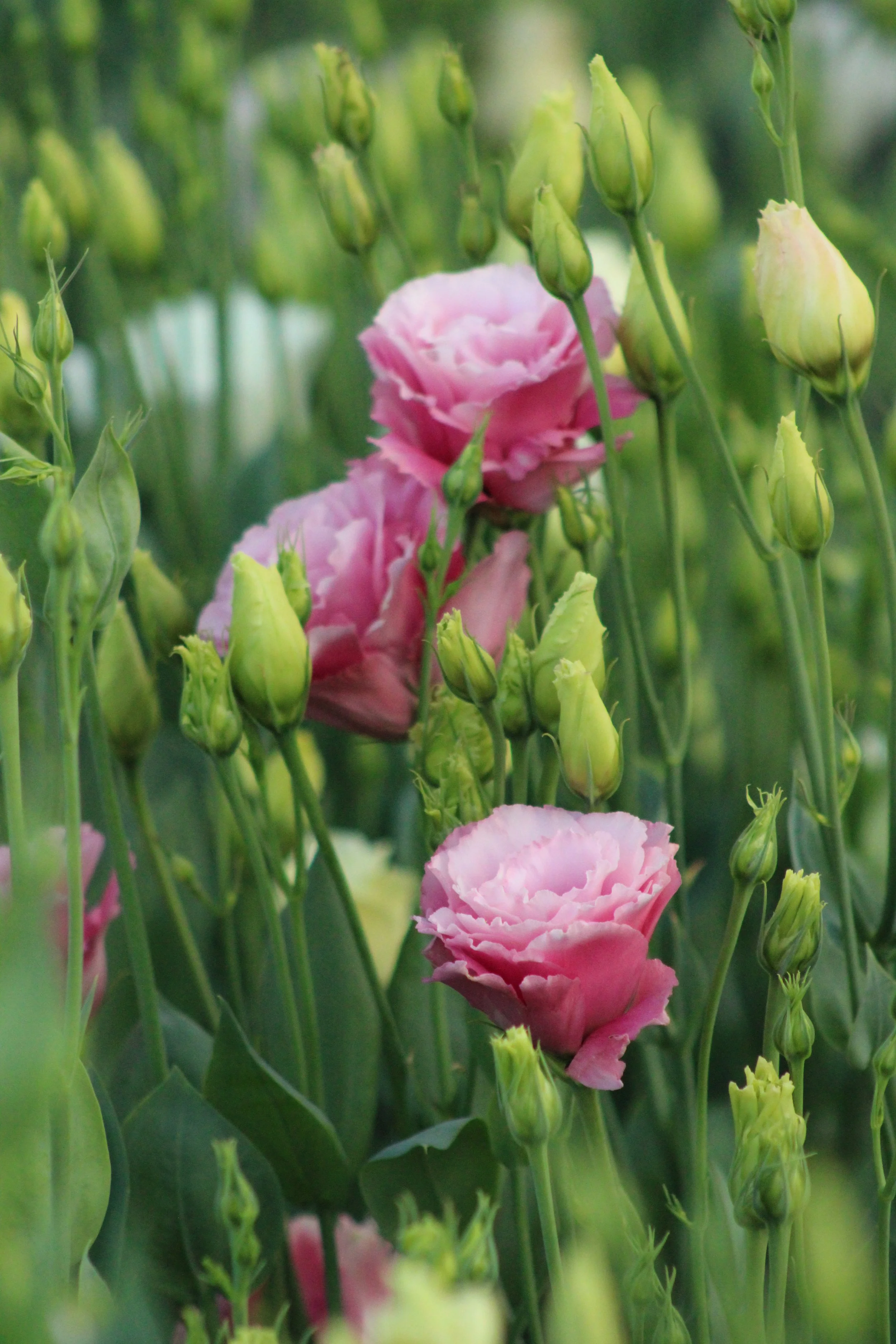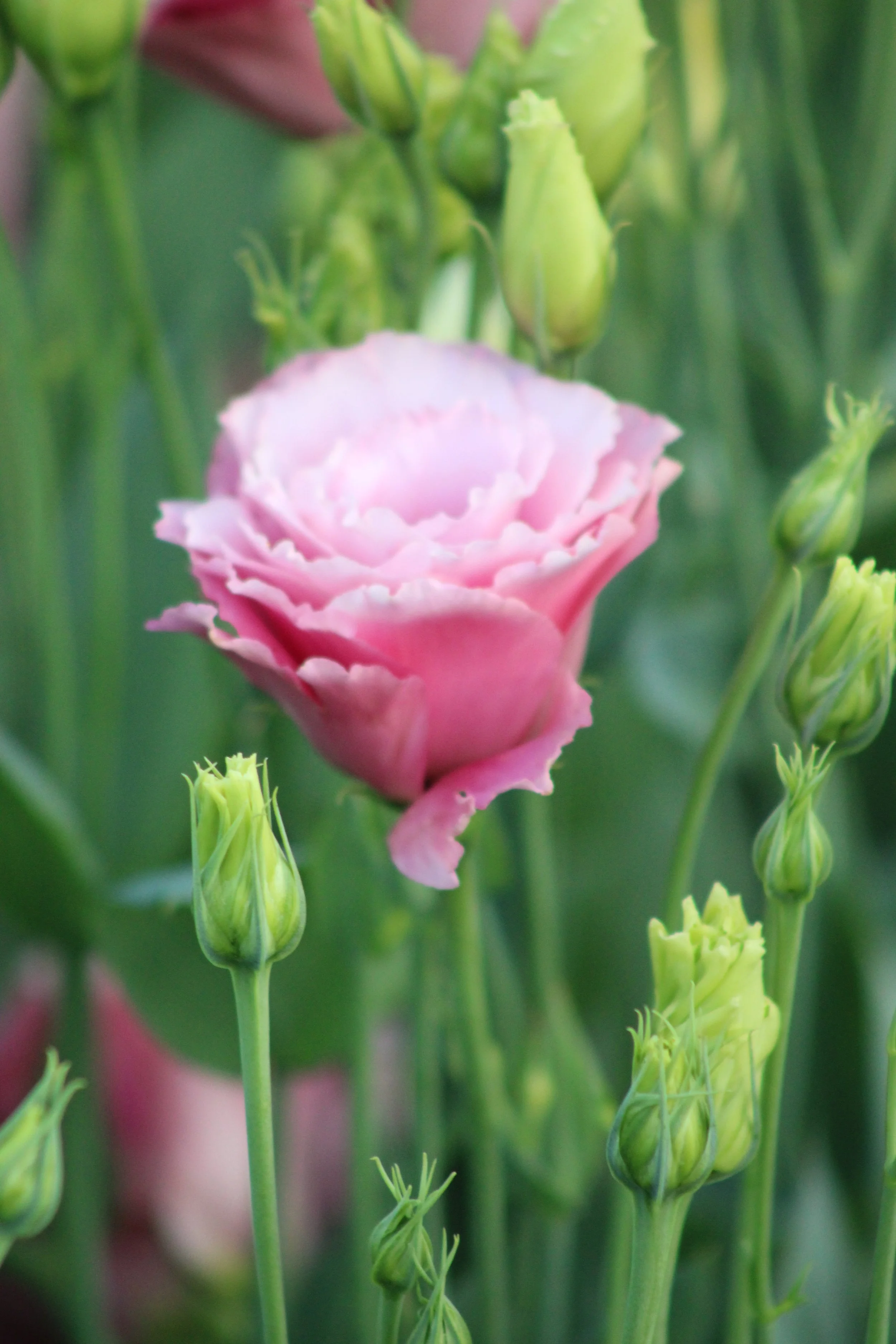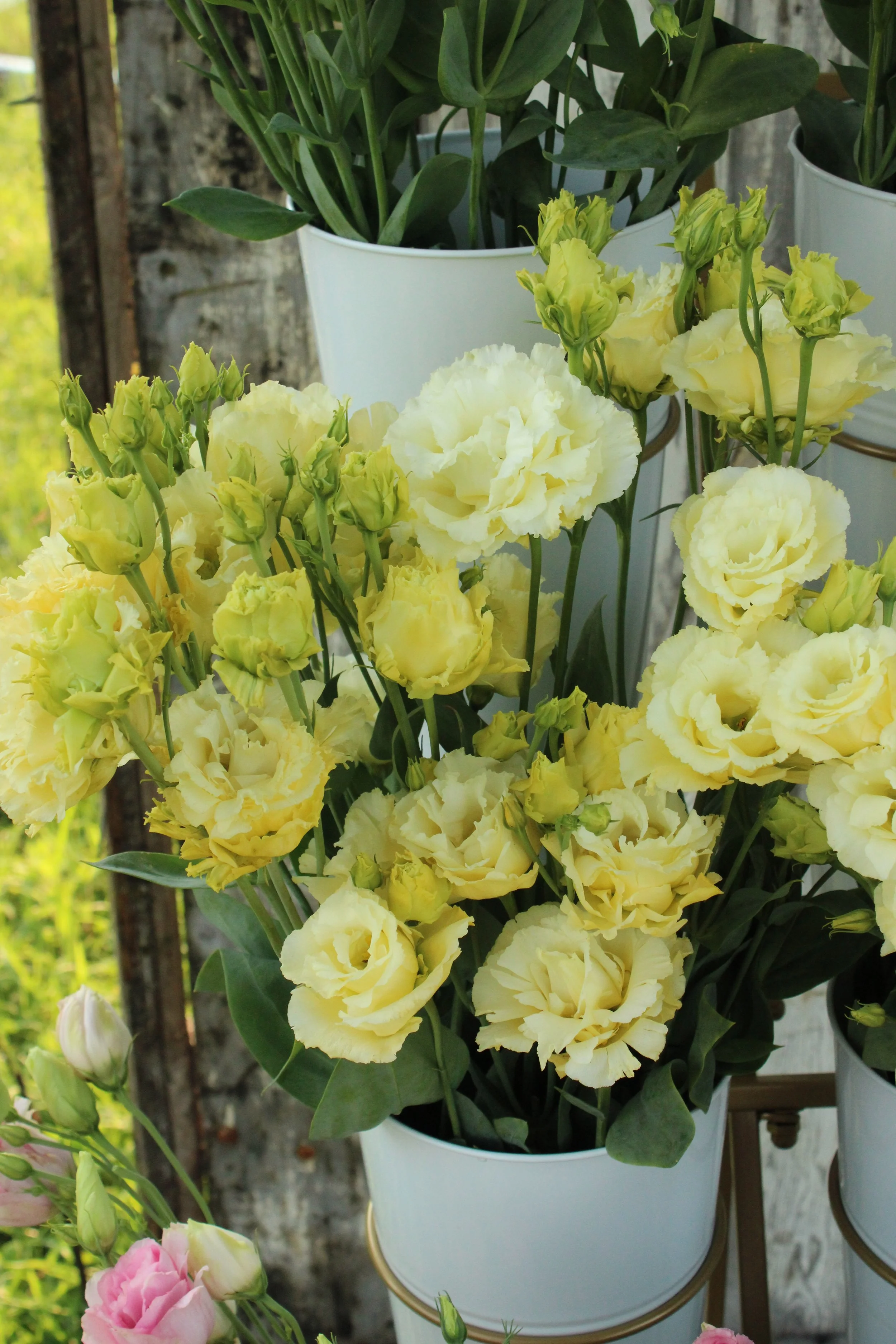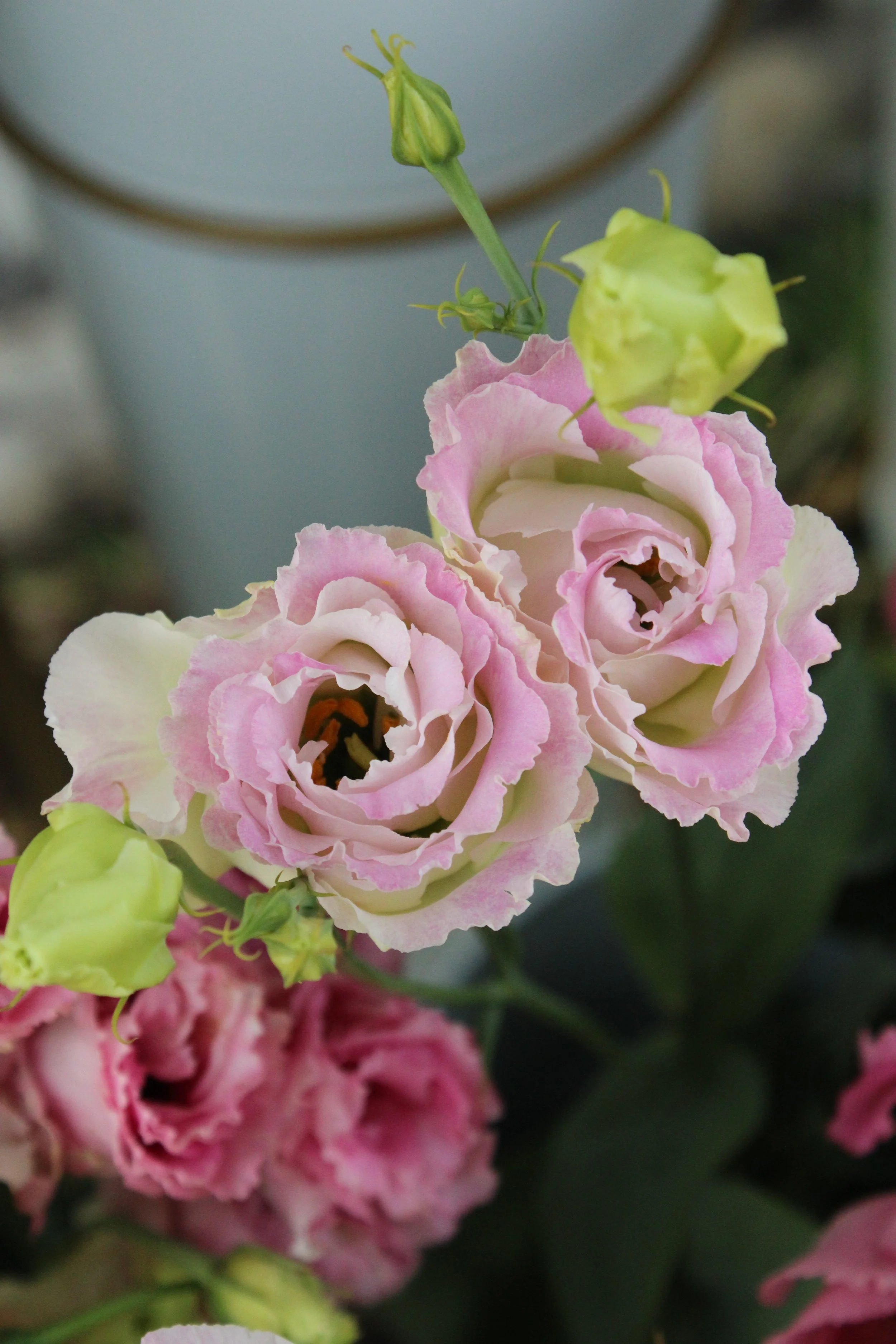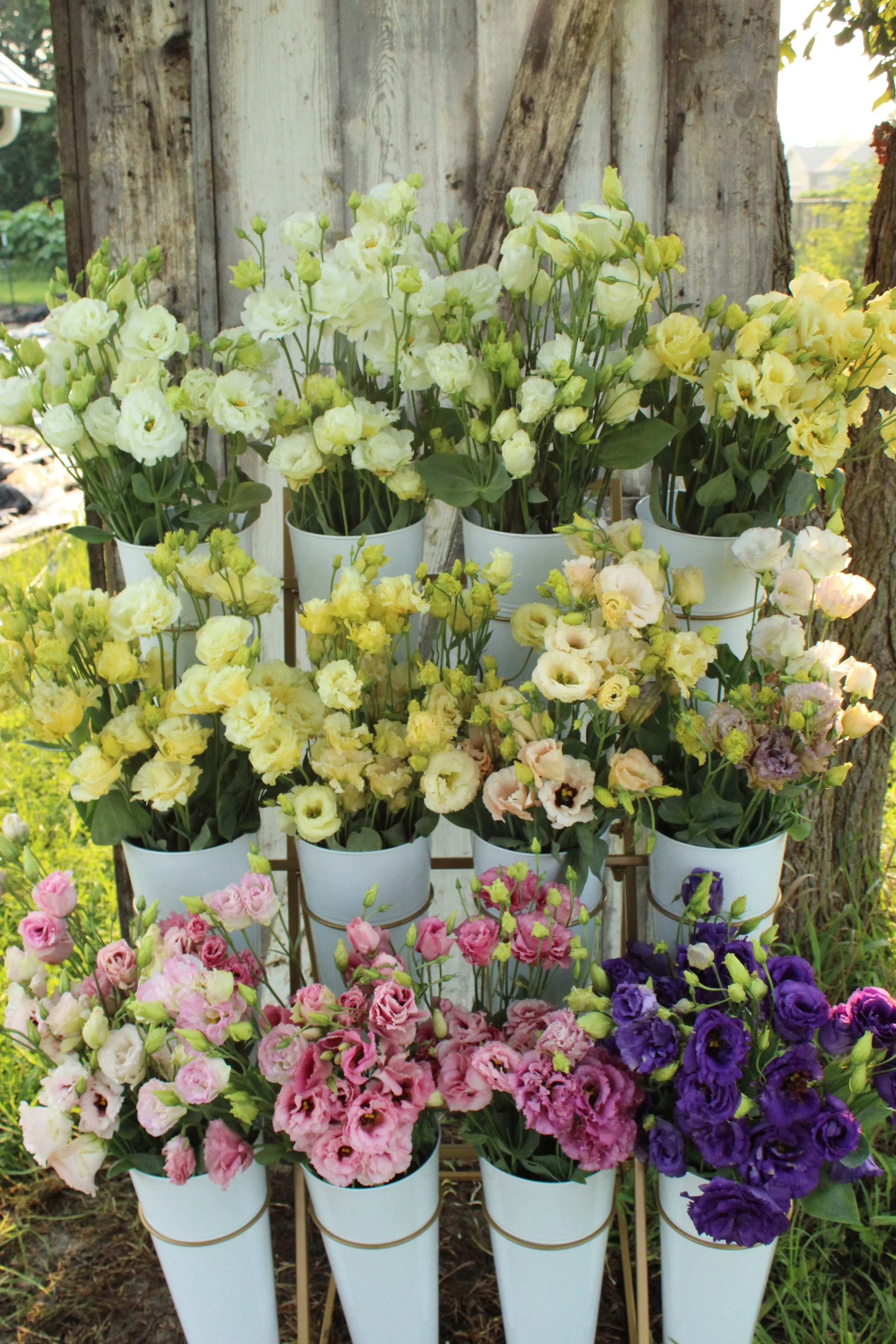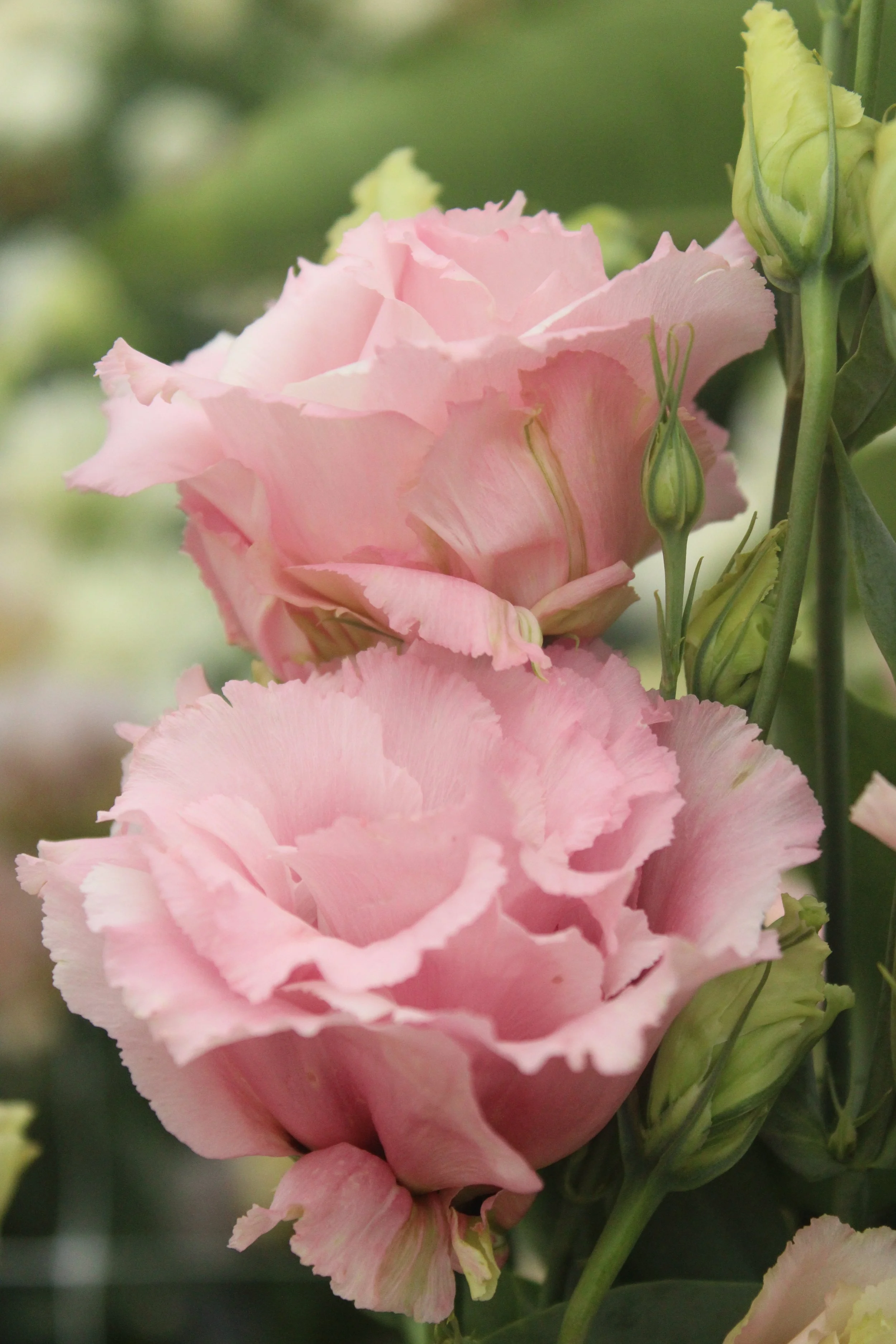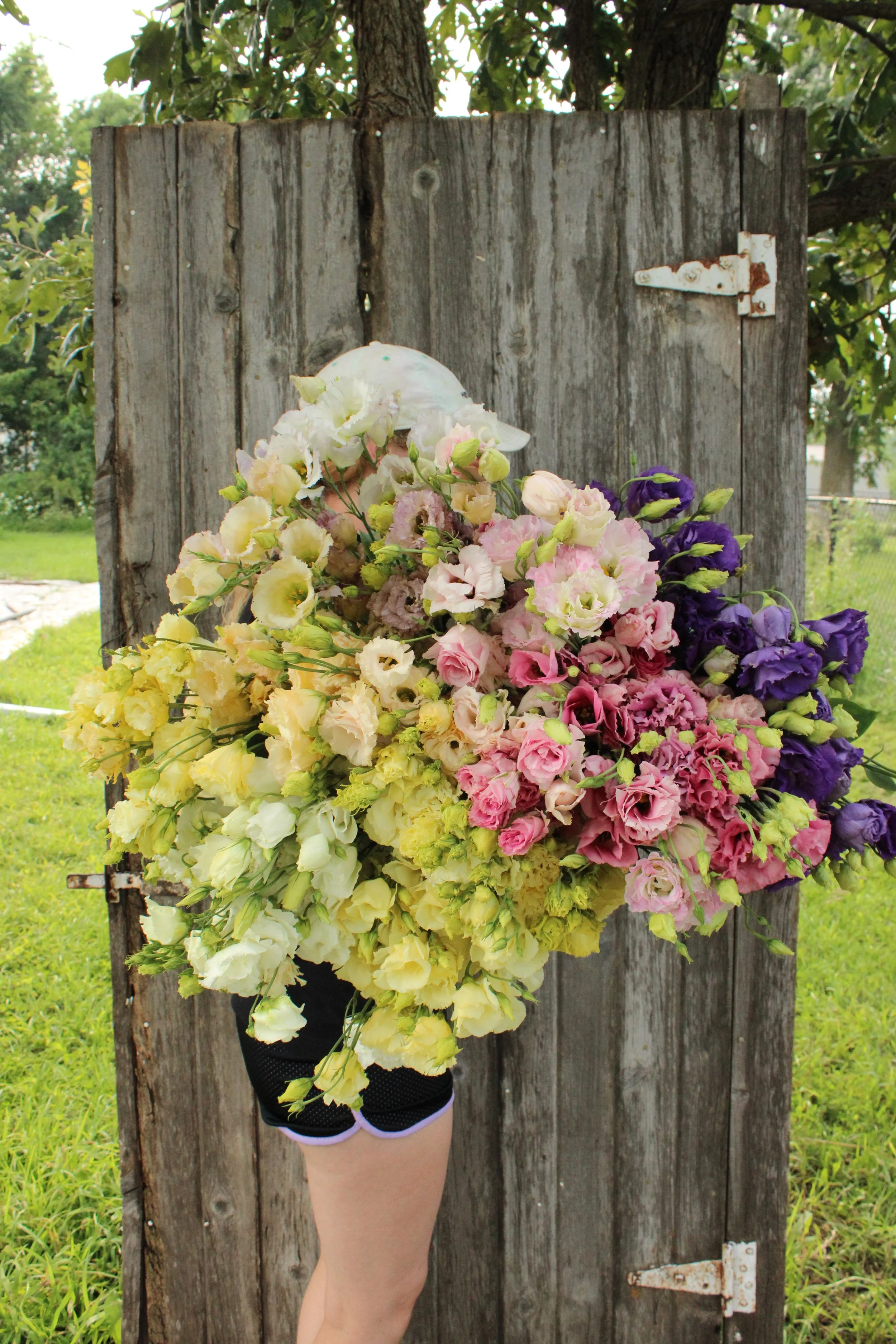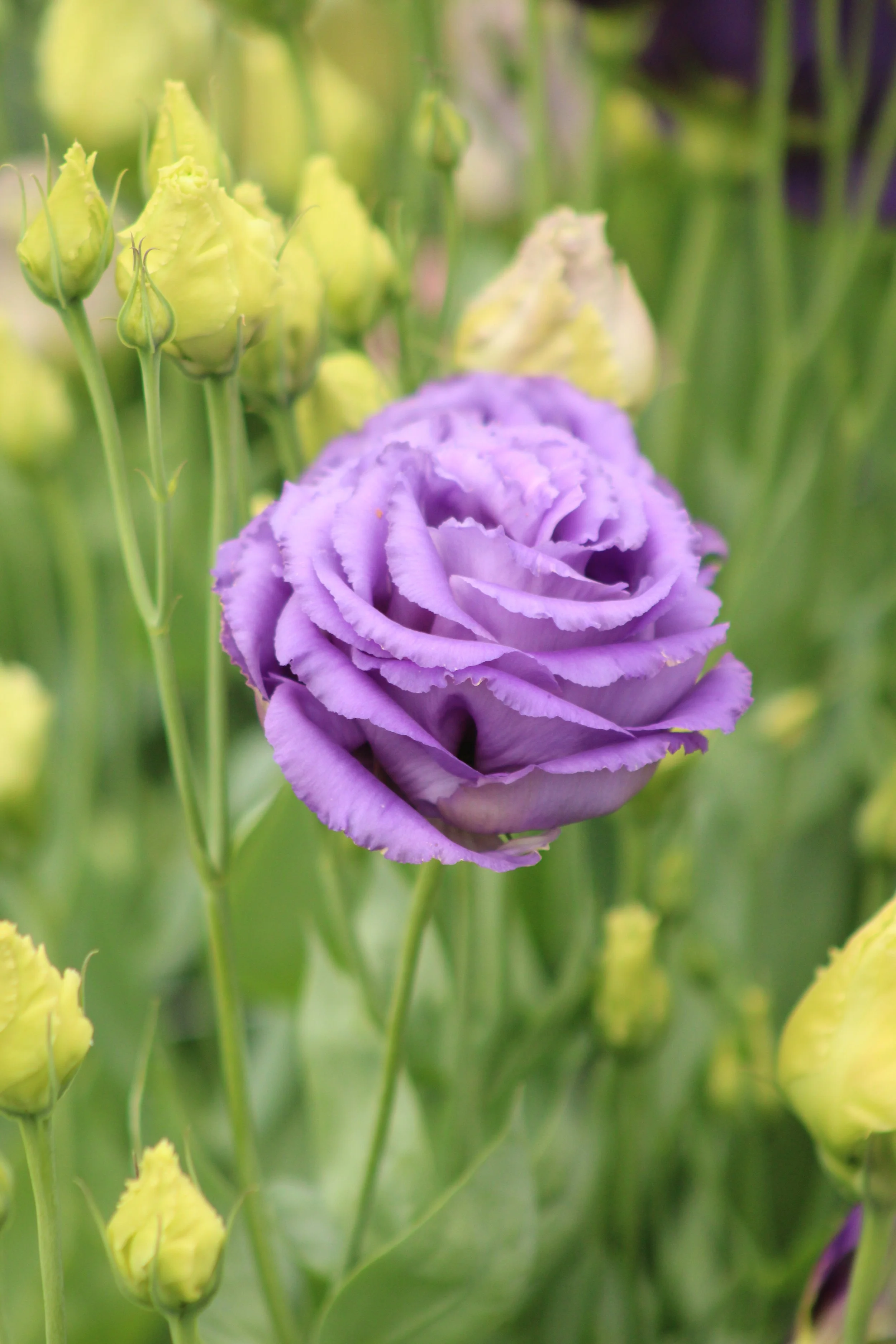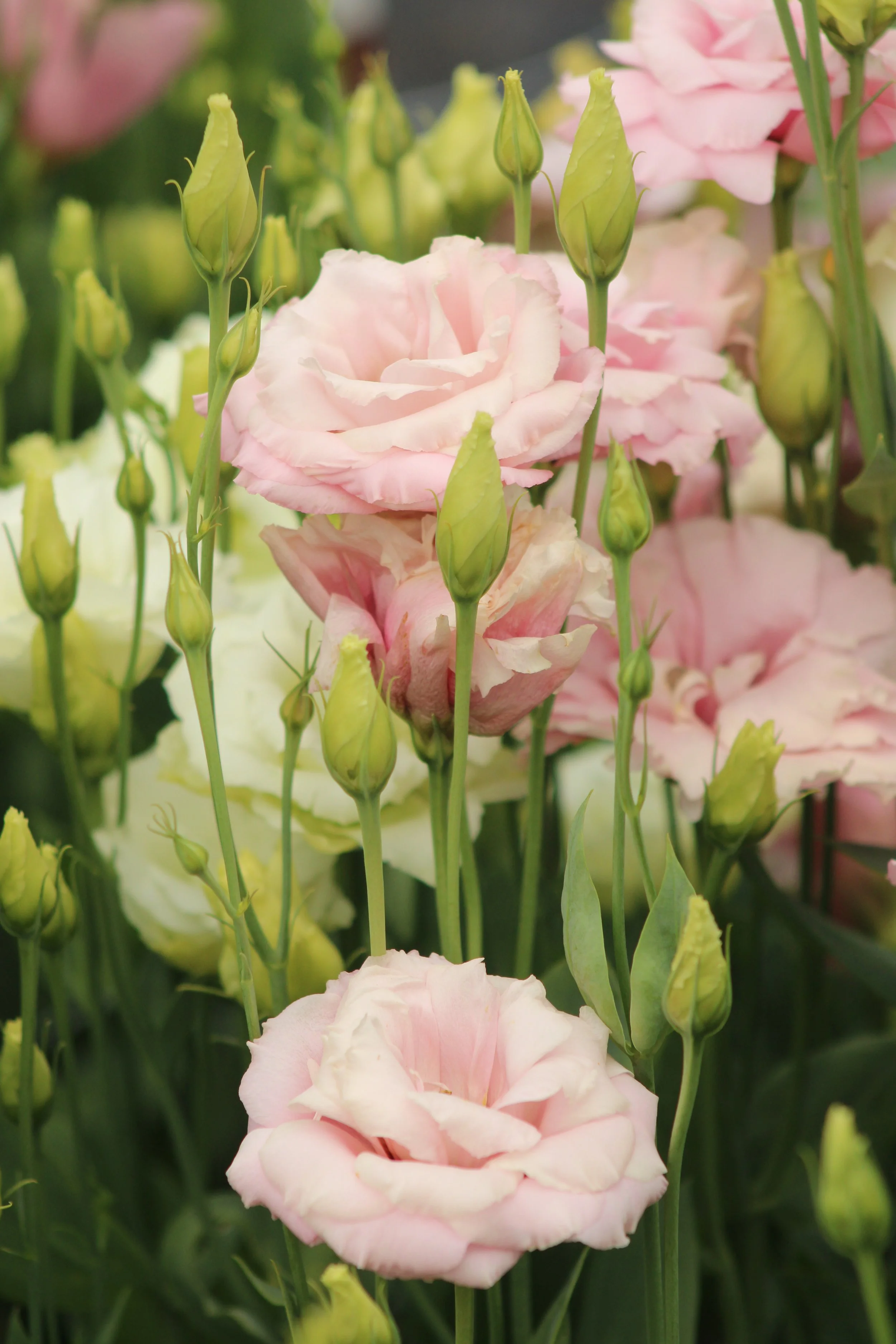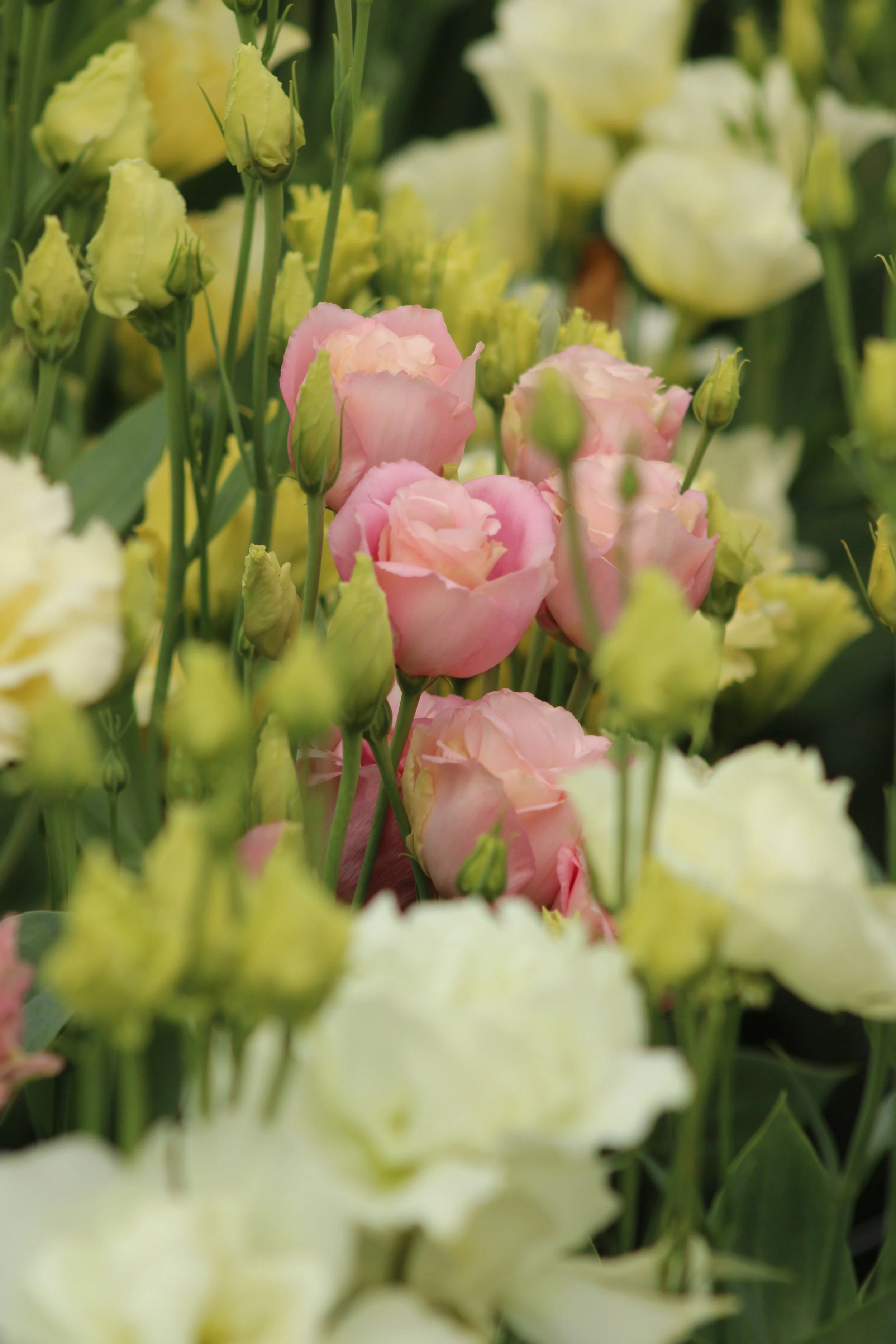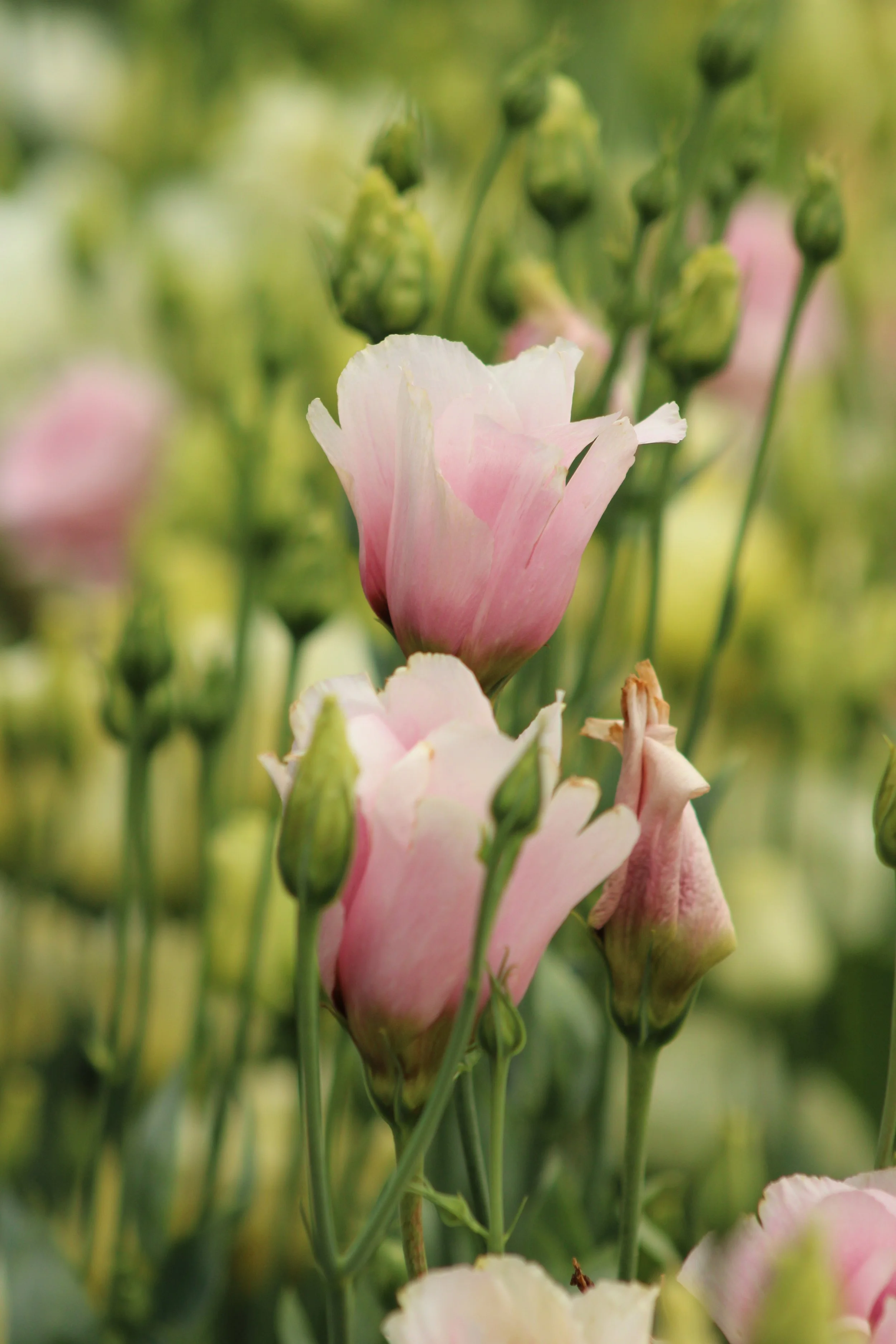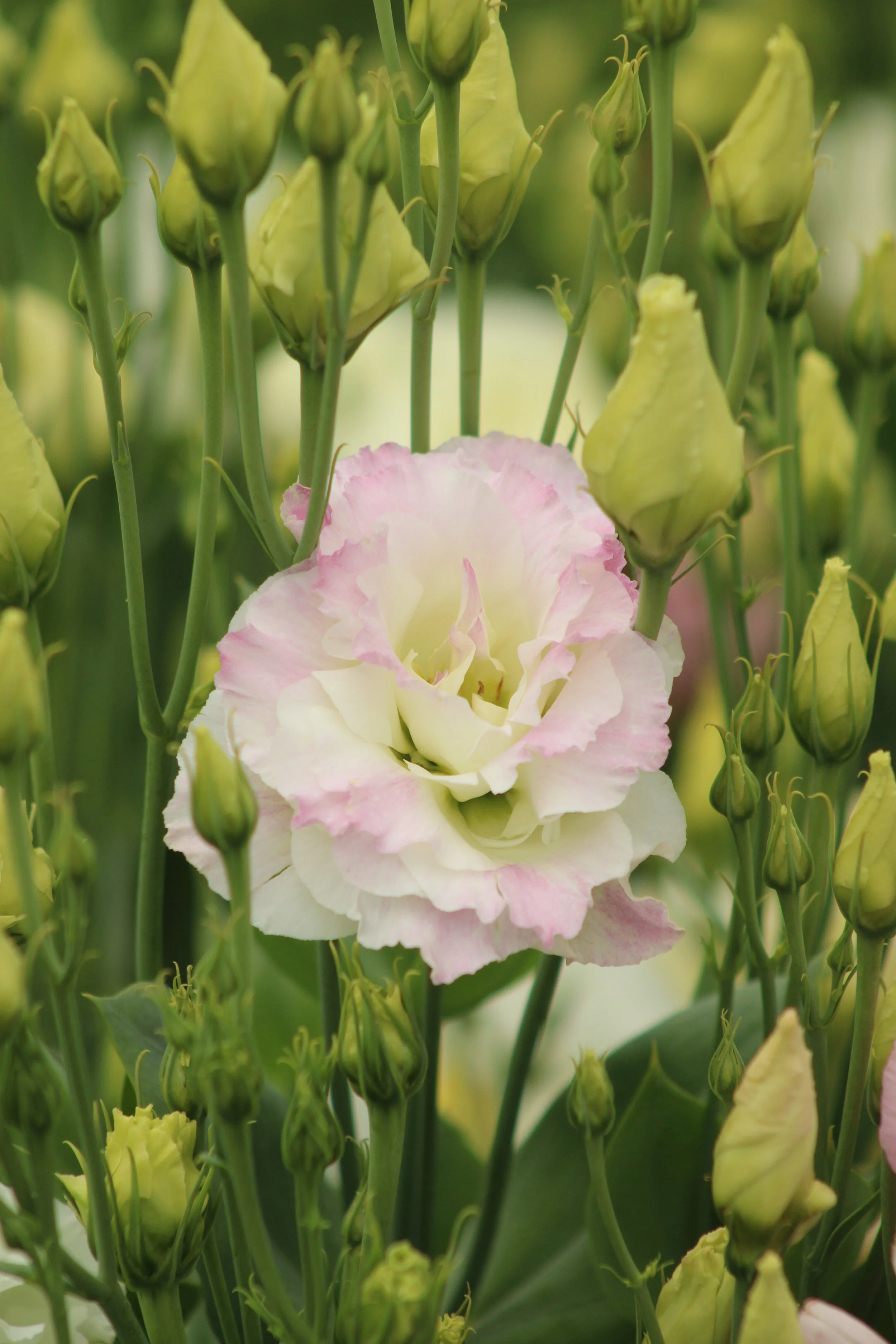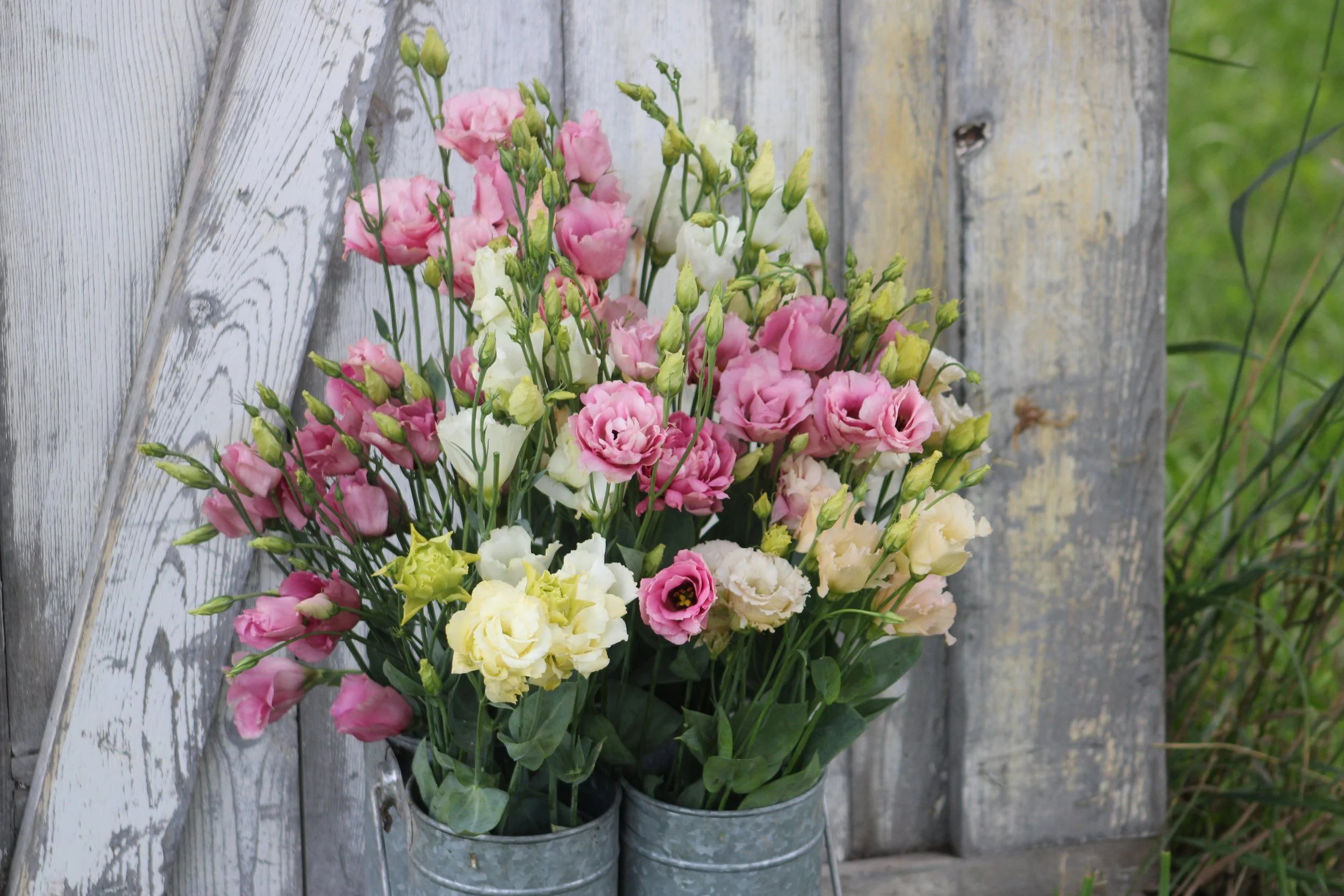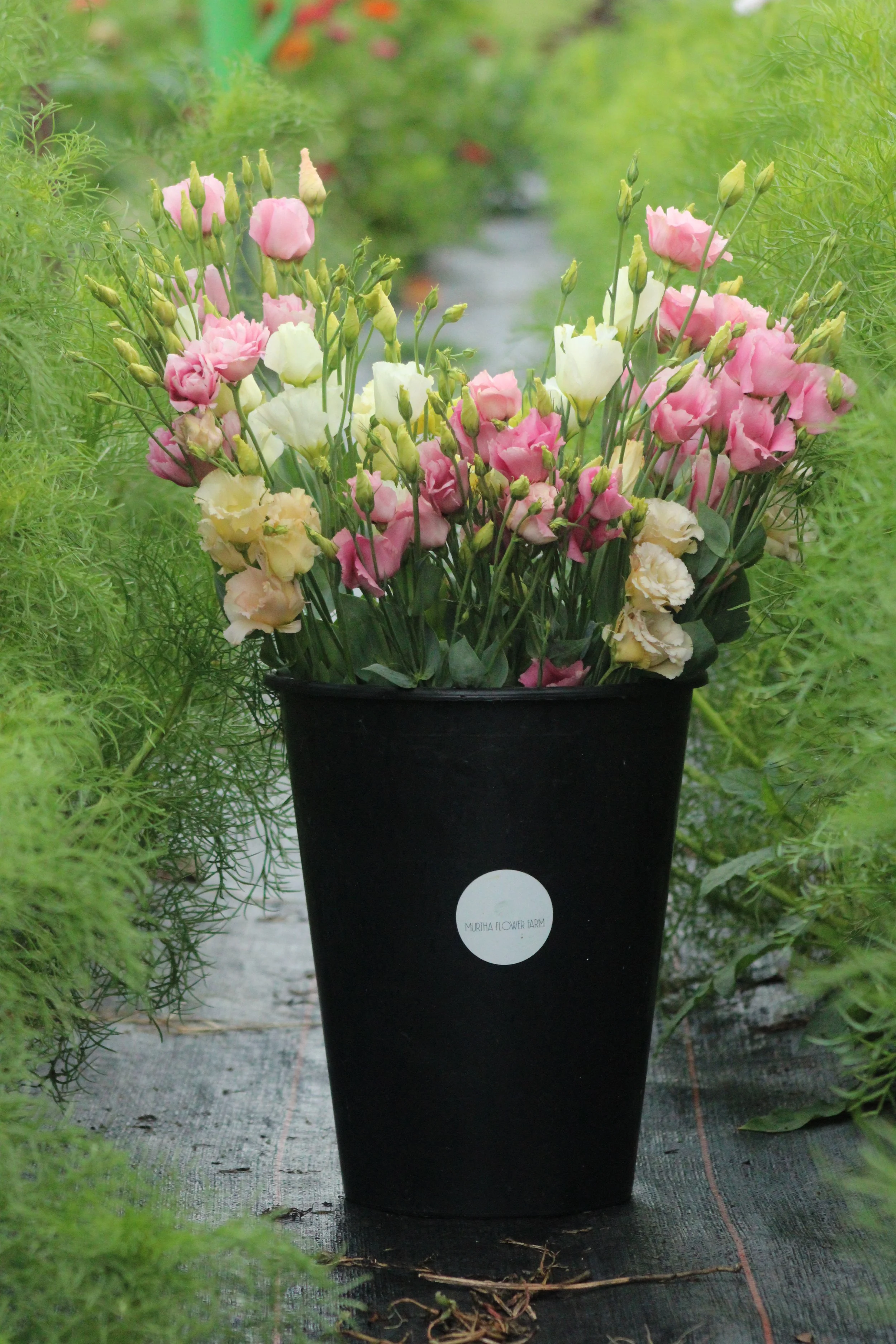Lisianthus Hybridizing
Hybridizing Lisianthus
Hybridizing lisianthus is a long and delicate process that blends patience, precision, and creativity. To create a new variety, breeders carefully cross-pollinate parent plants with desired traits—such as unique colors, petal forms, or improved vase life—and then grow out the resulting seed. Because lisianthus is genetically complex, it often takes six to eight generations (spanning many years) of careful selection and stabilization before a seed line reliably produces uniform plants. During this time, each generation is evaluated, and only the strongest, most consistent individuals are saved for the next round.
Most lisianthus seeds available commercially are F1 hybrids, meaning they are the very first cross between two carefully chosen parent lines. These hybrids are prized for their vigor, uniformity, and flower quality, but their traits do not remain stable if you save and replant the seeds. To establish a stable, open-pollinated lisianthus line from hybrids, a grower must commit to years of growing out large populations, selecting consistently, and “fixing” the desirable traits across successive generations. It’s this extensive investment of time, skill, and resources that makes lisianthus breeding such a specialized craft—and why hybrid seeds remain the standard in the marketplace.
I’m just at the beginning of my own lisianthus hybridizing journey, and part of the excitement is sharing the process with you. I’ll be offering un-pelleted seeds from non-established lines, which means each packet holds a touch of mystery—just like with dahlias, you never quite know what treasures will bloom. Every seedling is a surprise, and that’s where the magic begins. It will be a mix of colors, forms, heights, and sizes.
Take a peak below to see some of the blooms I had this year!
